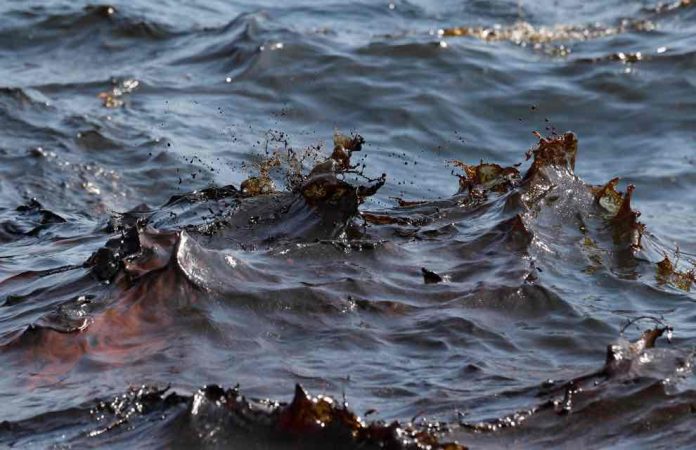Forty percent of the oil spilled from the Deepwater Horizon catastrophe was not consumed by bacteria and did not stay on the ocean’s surface due to the use of dispersants. The oil sank to the ocean floor and remains there today. New research conducted by David L. Valentine with the University of California at Santa Barbara and colleagues proved that as much as forty percent of the oil still remains on the ocean floor.
The researchers examined 500 spots around the Macondo Well where the disaster began. The entire search area covered 1,235 square miles. The scientists searched for signs of hopane (17.alpha.(H)-21.beta.(H)-hopane) because this compound is known to be a marker for the biodegradation of crude oil. The results indicate that between four and 31 percent of the oil spilled from the Deepwater Horizon disaster is still on the ocean floor. Estimates for the entire area that was contaminated are two million gallons.
The pattern of contamination shows that there were two different modes of deposition of oil from Deepwater Horizon. An oil laden layer was deposited on the continental slope between 2,900 feet and 4,300 feet below the surface of the ocean. Higher levels of oil persisted in a plume but eventually sank to depths between 4,300 feet and 5,500 feet below the surface of the ocean.
This is the first study that confirms beyond reasonable doubt that a large portion of the oil spilled in the Deepwater Horizon disaster is still resident on the ocean floor. The fact that a marker for biodegradation was used as an indicator of the presence of oil shows that some kind of ocean life has been consuming the oil at the bottom of the Gulf of Mexico. Small creatures that ate the oil could be consumed by food fish.
The discovery leaves the claim of the “genuine goodness” of fish and seafood caught by the Alabama Gulf Seafood producers and other producers in question. It is reasonable to think that any animal that ate the oil from the floor of the ocean would be consumed by food fish. The oil eating fish would then be consumed by humans.















